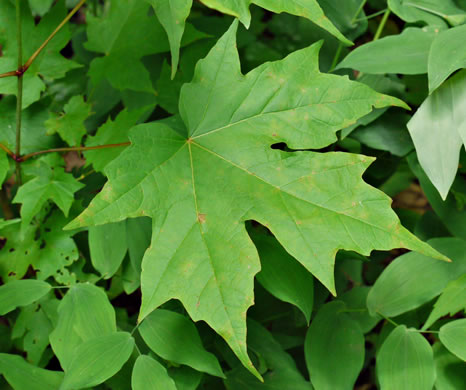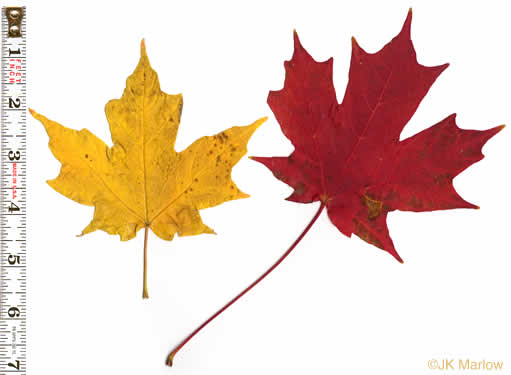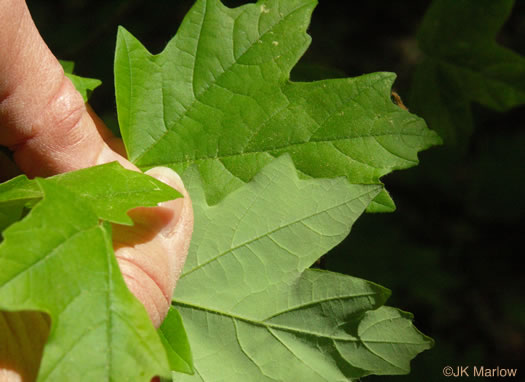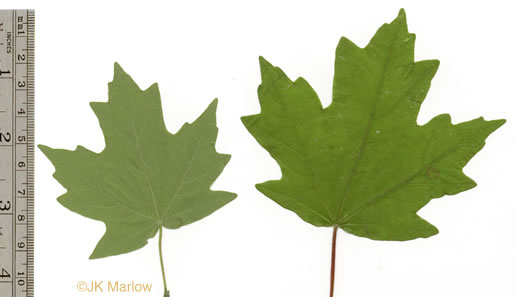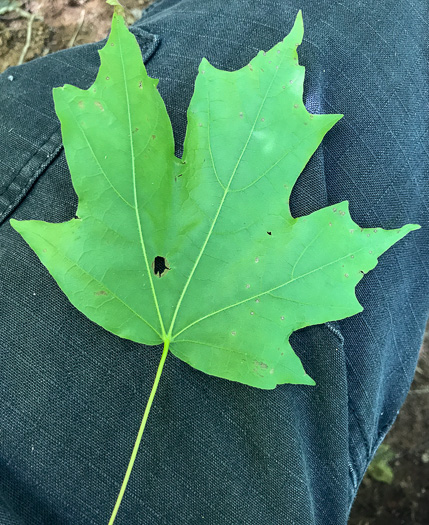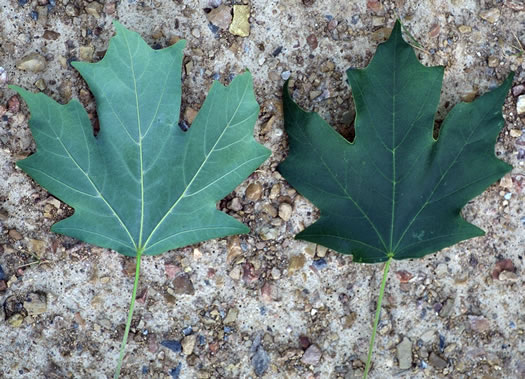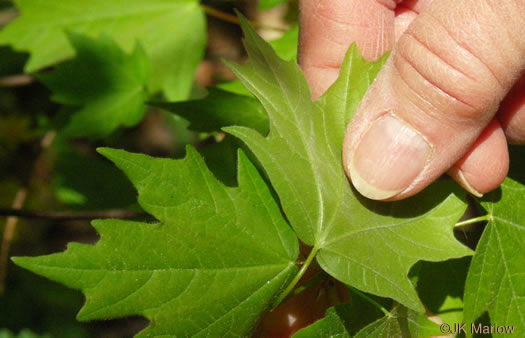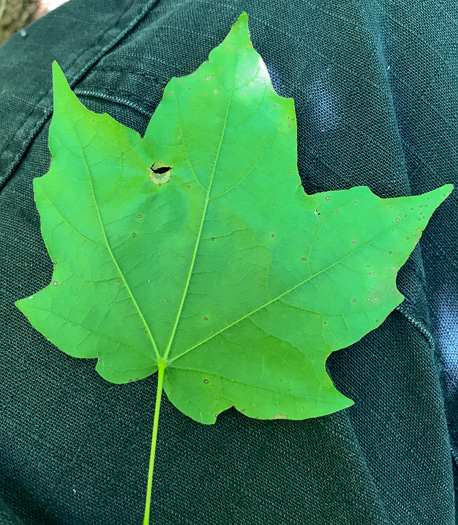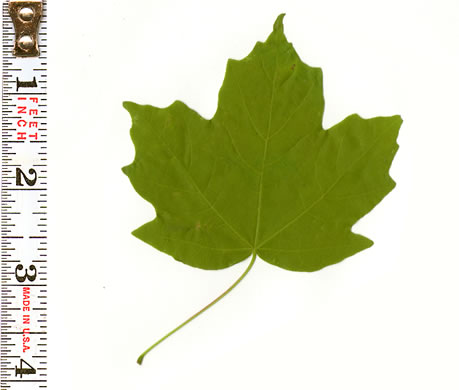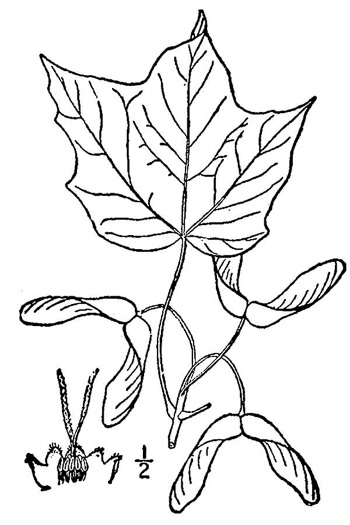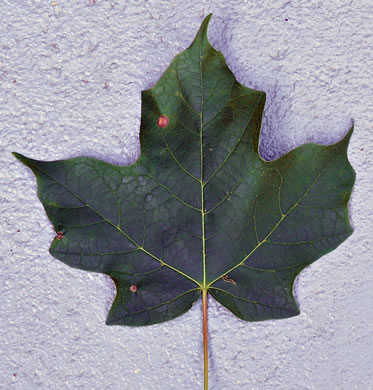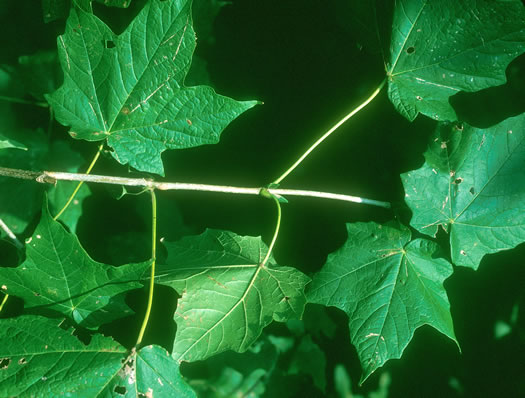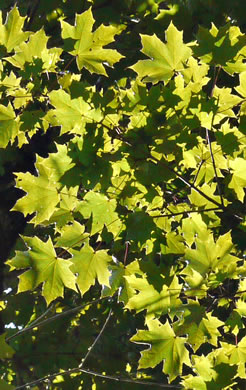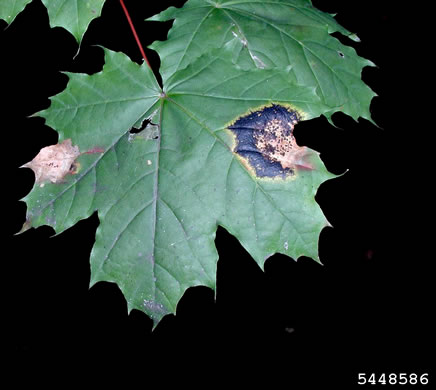Your search found 14 image(s) of leaves of Black, Chalk, Florida, Norway and Sugar Maple.
To see larger pictures, click or hover over the thumbnails.
To go to the plant's detail page, click its name.
 Habitat: Cove forests, other rich forests, especially over mafic and calcareous rocks, on calcareous soils common and typical in dry-mesic forests and dry woodlands as well, less typically extending to high elevation northern hardwood forests where sometimes in acidic situations (as in Highlands County, VA), in parts of the Piedmont perhaps more common as an introduction by ornamental planting than as a native, at least south of VA
Habitat: Cove forests, other rich forests, especially over mafic and calcareous rocks, on calcareous soils common and typical in dry-mesic forests and dry woodlands as well, less typically extending to high elevation northern hardwood forests where sometimes in acidic situations (as in Highlands County, VA), in parts of the Piedmont perhaps more common as an introduction by ornamental planting than as a native, at least south of VA
Blades 3-5" long, sinuses globose, lobe margins entire or wavy, per Native Trees of the Southeast, An Identification Guide (Kirkman, Brown, & Leopold, 2007).
You're likely to encounter this in residential or commercial plantings, per The Native Maples of Georgia (Ware, 2003).
 Habitat: Bottomland forests, mesic slopes, especially common over mafic or calcareous rocks, but not at all limited to such situations
Habitat: Bottomland forests, mesic slopes, especially common over mafic or calcareous rocks, but not at all limited to such situations
Leaf blades to 3.5" long. Upper surfaces dark green, lower whitish & hairy, per Native Trees of the Southeast, An Identification Guide (Kirkman, Brown, & Leopold, 2007).
Terminal lobes of some leaves broader toward tip than toward base, per Native Trees of the Southeast, An Identification Guide (Kirkman, Brown, & Leopold, 2007).
Sinus angle < 70° (the terminal lobe typically w parallel margins, or narrower toward the base), per Weakley's Flora (2015).
Leaf undersurface pale, silvery-gray, or strongly glaucous, usually pubescent, per Weakley's Flora.
 Habitat: Rocky slopes and bluffs, particularly over mafic or calcareous rock, on the Gulf Coast in floodplains
Habitat: Rocky slopes and bluffs, particularly over mafic or calcareous rock, on the Gulf Coast in floodplains
Leaves variably pubescent beneath, but (unlike A. barbatum) not glaucous, per Native Trees of the Southeast, An Identification Guide (Kirkman, Brown, & Leopold, 2007).
Sinuses shallow, the angle > 90° (the terminal lobe typically broadly triangular), per Weakley's Flora (2015).
Lobes narrower at the tip than at the base, tips pointed (even acuminate), per Native Trees of the Southeast, An Identification Guide (Kirkman, Brown, & Leopold, 2007).
 Habitat: Riverbanks, streambanks, cove forests, river slope forests, especially over calcareous rocks
Habitat: Riverbanks, streambanks, cove forests, river slope forests, especially over calcareous rocks
Basal lobes smaller than Sugar Maple's, and sinuses comparatively shallow, per The Native Maples of Georgia (Ware, 2003).
Usually a prominent stipule at petiole base (vs. not in A. saccharum), per The Native Maples of Georgia (Ware, 2003).
 Habitat: Suburban woodlands, disturbed forests, hedgerows
Habitat: Suburban woodlands, disturbed forests, hedgerows
Leaves with a few large teeth but no serrations, per Trees of the Southeastern United States (Duncan & Duncan, 1988).
Laef shape and milky sap distinguish this from native maples, per Invasive Plants, Guide to Identification, Impacts and Control (Kaufman & Kaufman, 2007).

